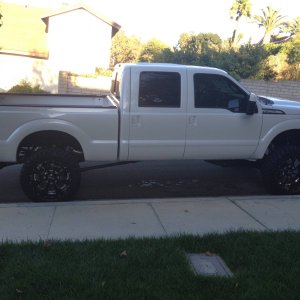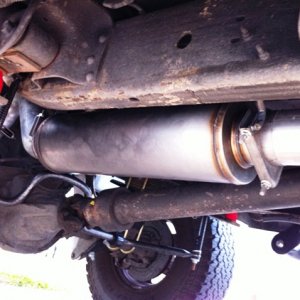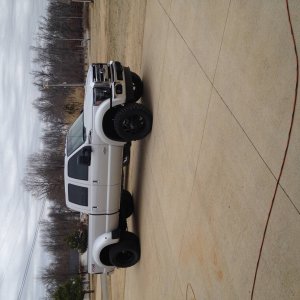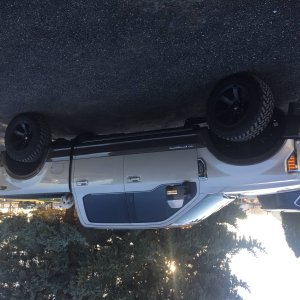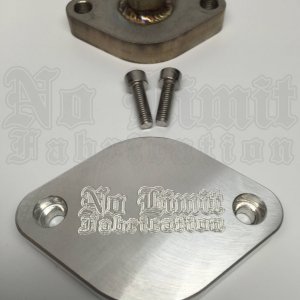You are using an out of date browser. It may not display this or other websites correctly.
You should upgrade or use an alternative browser.
You should upgrade or use an alternative browser.
On my way to 500HP!
- Thread starter Power Hungry
- Start date
Power Hungry
Member
Hey bill, filled out the form last night, hopefully it went through :toast:
Yep, came through at 8:40 PM.
Yep, came through at 8:40 PM.
Perfect:redspotdance:
chappy
New member
Anyone happen to have a PowerMax laying around that they'd like to loan for a week to test? I'd be happy to make it worth your while with some free tuning or something.
I would help you out if I had one laying around. Hopefully someone could set you up with one for testing.
Lubbockguy1979
Active member
so on the hpop subject. what about the differences in pumps and oil rails
Power Hungry
Member
It's my understanding that the stock HP oil lines are a limiting factor in supplying oil to the injector rails, but I'm not sure at what point it will become a serious issue. However, this will be readily identifiable by a drop in ICP so I'll cross that bridge when I get to it. As for the HPOP, I'm not sure where that will become an issue either, so we'll just have to see. My bigger concern right now is the ability to maintain adequate fuel pressure to the injectors, especially under hard acceleration. Not that i'm pulling any serious G's on launch, but it is something to consider.
Redneck6.0L
New member
- Joined
- May 19, 2011
- Messages
- 1,123
- Reaction score
- 0
How much do you understand about hydraulics. The difference between pressure and flow
Power Hungry
Member
Is that even a serious question?
strokin6L
Active member
It's not gonna be the high pressure oil lines that will be the limiting factor....it's gonna be the pump.
windrunner408
New member
- Joined
- Jul 27, 2011
- Messages
- 1,496
- Reaction score
- 0
It's not gonna be the high pressure oil lines that will be the limiting factor....it's gonna be the pump.
That's not necessarily always true. According to Bob @ Dieselsite (I like quoting qualified people), the 6.0 HPO delivery system is in fact a restriction and better delivery can be achieved with just a stock pump if his HPODS is used and if you order his high volume output HPOP, his HPODS is required (according to him). This would tell me that it is more the delivery system over the pump. Then again this is merely quoting someone so take it FWIW.
Power Hungry
Member
You can have the largest HPOP in the world, but if the delivery system (fittings, lines, rails, etc.) bottleneck the output, all you are going to end up with is a tremendous pressure drop at the injector as soon as the spool valve opens. There is a reason why Ford moved the ICP sensor directly to the top of the oil rail. This was to provide an accurate pressure reading at the injector.
For the sake of argument, let's break it down to a real-world analogy that anyone can try... A garden hose. Our system comparison is as follows:
The water main to the house is your HPOP.
The spigot (valve) is the HPO system restriction. (HPO lines, fittings, and overall pressure loss from distance.)
The garden hose is the HPO rail in the head.
The spray nozzle is the injector.
The opening of the spray nozzle is the injection pulsewidth.
Take the garden hose with a spray nozzle on the end of it and make sure the nozzle is closed. Crack the spigot a tiny bit and let the pressure in the hose build up. Now open the spray nozzle and you get a quick burst at high pressure but it then immediately peters out to little more than a dribble. Close the spray valve and pressure builds back up again. If you cycle the opening and closing of the spray nozzle correctly (small, controlled pulsewidth), you will always get a good burst of water when opening the nozzle. Hold the nozzle open too long (large pulsewidth) and it will peter out. Remove the restriction (open the spigot) and you can hold the nozzle open all day long with no drop in pressure at nozzle.
Yes, this is probably an oversimplification, but it doesn't make it any less relevant.
I've looked at the HPODS that is offered on DieselSite and their solution is to add a second point of entry for oil into the HPO rail by utilizing the ICP sensor ports of each head. (Modification required, of course!) Since this is a parallel system, this effectively doubles the delivery (flow) capability between the HPOP and the HPO rails.
If you aren't convinced there is a restriction or pressure drop in the system, take an ICP sensor and install it in the pump cover (like on an '03) and then measure the difference between the pump mounted sensor and the head mounted sensor. Any difference in pressure will clearly indicate a FLOW problem between the HPOP and the injector rails.
In fact, I will be doing this EXACT test next week before I install the injectors. I will be mounting a second ICP sensor at the pump and then taking readings from both sensors running different programs. I'll post up the datalogs and then we can settle this debate entirely.
For the sake of argument, let's break it down to a real-world analogy that anyone can try... A garden hose. Our system comparison is as follows:
The water main to the house is your HPOP.
The spigot (valve) is the HPO system restriction. (HPO lines, fittings, and overall pressure loss from distance.)
The garden hose is the HPO rail in the head.
The spray nozzle is the injector.
The opening of the spray nozzle is the injection pulsewidth.
Take the garden hose with a spray nozzle on the end of it and make sure the nozzle is closed. Crack the spigot a tiny bit and let the pressure in the hose build up. Now open the spray nozzle and you get a quick burst at high pressure but it then immediately peters out to little more than a dribble. Close the spray valve and pressure builds back up again. If you cycle the opening and closing of the spray nozzle correctly (small, controlled pulsewidth), you will always get a good burst of water when opening the nozzle. Hold the nozzle open too long (large pulsewidth) and it will peter out. Remove the restriction (open the spigot) and you can hold the nozzle open all day long with no drop in pressure at nozzle.
Yes, this is probably an oversimplification, but it doesn't make it any less relevant.
I've looked at the HPODS that is offered on DieselSite and their solution is to add a second point of entry for oil into the HPO rail by utilizing the ICP sensor ports of each head. (Modification required, of course!) Since this is a parallel system, this effectively doubles the delivery (flow) capability between the HPOP and the HPO rails.
If you aren't convinced there is a restriction or pressure drop in the system, take an ICP sensor and install it in the pump cover (like on an '03) and then measure the difference between the pump mounted sensor and the head mounted sensor. Any difference in pressure will clearly indicate a FLOW problem between the HPOP and the injector rails.
In fact, I will be doing this EXACT test next week before I install the injectors. I will be mounting a second ICP sensor at the pump and then taking readings from both sensors running different programs. I'll post up the datalogs and then we can settle this debate entirely.
Lubbockguy1979
Active member
Pressure, and volume play a part in the role as well. You can have all the pressure you want as with a water fixture but it does you no good if the volume of fluid also isn't there.
Last edited:
strokin6L
Active member
I would just think that if the high pressure lines were a limiting factor more than the pump...then you'd start seeing ICP issues sooner. Such as when just installing a programmer or even smaller injectors(155's-190's). We don't start seeing ICP issues till around 225cc injectors with stock HPOP system. Tim(dalpilot) had Bob's billet adrenaline HPOP without the HPODS and Deranged still held ICP.
Power Hungry
Member
The question is, was anyone actually measuring the ICP at both the rails and the pump to see if there was any actual pressure drop in the system?
When talking with Bob about this subject today, he indicated that when he had done initial testing on the system on an otherwise stock(ish) truck, the HPO rails would show a reasonable pressure but the HPOP would be hundreds of PSI higher.
Again, it comes down to a very simple test. Two ICP sensors... One at the HPOP and one in the head. If the delivery system is not a concern, then there should be pretty close to ZERO pressure difference between sensors. Being able to test under different conditions such as varying loads and power levels will help to shed light on just where any deficiencies are. All it takes is time, and a $135 sensor. Well worth the investment to put this issue to bed.
On Edit:
Just got off the phone with Bob and he confirmed that Tim DID have the HPODS system installed on Deranged at the same time he installed his Adrenaline HPOP. In fact, when they first started the truck and realized (much too late) that the had an oil filter problem on the truck which caused him to have to tear down the engine, he had the HPODS and Adrenaline installed because he had to send it all back to be to be rebuilt to remover the filter debris.
When talking with Bob about this subject today, he indicated that when he had done initial testing on the system on an otherwise stock(ish) truck, the HPO rails would show a reasonable pressure but the HPOP would be hundreds of PSI higher.
Again, it comes down to a very simple test. Two ICP sensors... One at the HPOP and one in the head. If the delivery system is not a concern, then there should be pretty close to ZERO pressure difference between sensors. Being able to test under different conditions such as varying loads and power levels will help to shed light on just where any deficiencies are. All it takes is time, and a $135 sensor. Well worth the investment to put this issue to bed.
On Edit:
Just got off the phone with Bob and he confirmed that Tim DID have the HPODS system installed on Deranged at the same time he installed his Adrenaline HPOP. In fact, when they first started the truck and realized (much too late) that the had an oil filter problem on the truck which caused him to have to tear down the engine, he had the HPODS and Adrenaline installed because he had to send it all back to be to be rebuilt to remover the filter debris.
Last edited:
Power Hungry
Member
Mod progressions are planned as follows:
- Base runs
- Exhaust System
- Banjo Bolts and "Blue" Spring
- 175cc Injectors w/Stock Nozzles
- Adrenaline HPOP
- 175cc Injectors w/80% Nozzles
- 190cc Injectors w/100% Nozzles
Just for reference, Bob called me and told me that the pump he sent me was NOT an Adrenaline, but in fact a modified output HPOP that flows a bit over stock. I just wanted to make sure that there was no question when it comes down to final numbers. Sorry for any confusion.
windrunner408
New member
- Joined
- Jul 27, 2011
- Messages
- 1,496
- Reaction score
- 0
Your picture shows that it is indeed a billet pump housing. So did you get the stock output or the "high volume" output (as it is referred to on Bob's website)??
The question is, was anyone actually measuring the ICP at both the rails and the pump to see if there was any actual pressure drop in the system?
When talking with Bob about this subject today, he indicated that when he had done initial testing on the system on an otherwise stock(ish) truck, the HPO rails would show a reasonable pressure but the HPOP would be hundreds of PSI higher.
Again, it comes down to a very simple test. Two ICP sensors... One at the HPOP and one in the head. If the delivery system is not a concern, then there should be pretty close to ZERO pressure difference between sensors. Being able to test under different conditions such as varying loads and power levels will help to shed light on just where any deficiencies are. All it takes is time, and a $135 sensor. Well worth the investment to put this issue to bed.
On Edit:
Just got off the phone with Bob and he confirmed that Tim DID have the HPODS system installed on Deranged at the same time he installed his Adrenaline HPOP. In fact, when they first started the truck and realized (much too late) that the had an oil filter problem on the truck which caused him to have to tear down the engine, he had the HPODS and Adrenaline installed because he had to send it all back to be to be rebuilt to remover the filter debris.
good ole' trusted LOL
Power Hungry
Member
It's the "stock" output billet pump which, according to the website, is supposed to flow a bit slightly more than stock.
windrunner408
New member
- Joined
- Jul 27, 2011
- Messages
- 1,496
- Reaction score
- 0
Makes sense. Good to know. So if you replace your current HPOP and notice more power is produced, then I guess you have a bad HPOP??
Power Hungry
Member
Makes sense. Good to know. So if you replace your current HPOP and notice more power is produced, then I guess you have a bad HPOP??
Well, at 285K miles, I'd say it's a strong possibility. :shrug:

